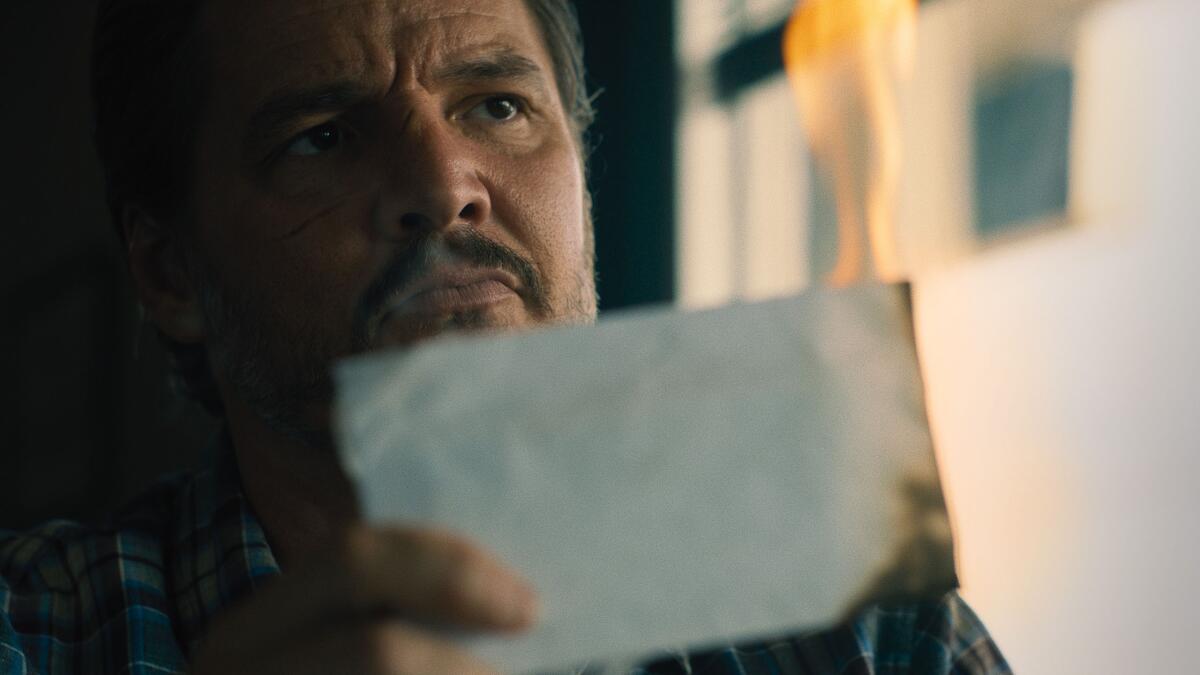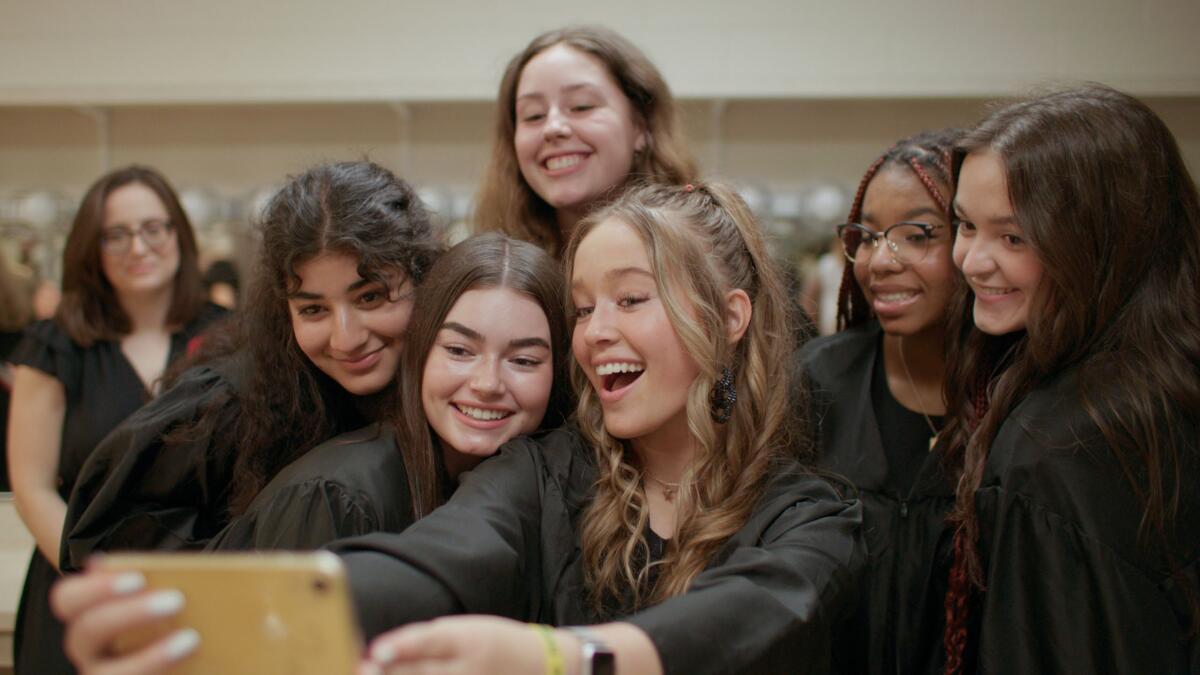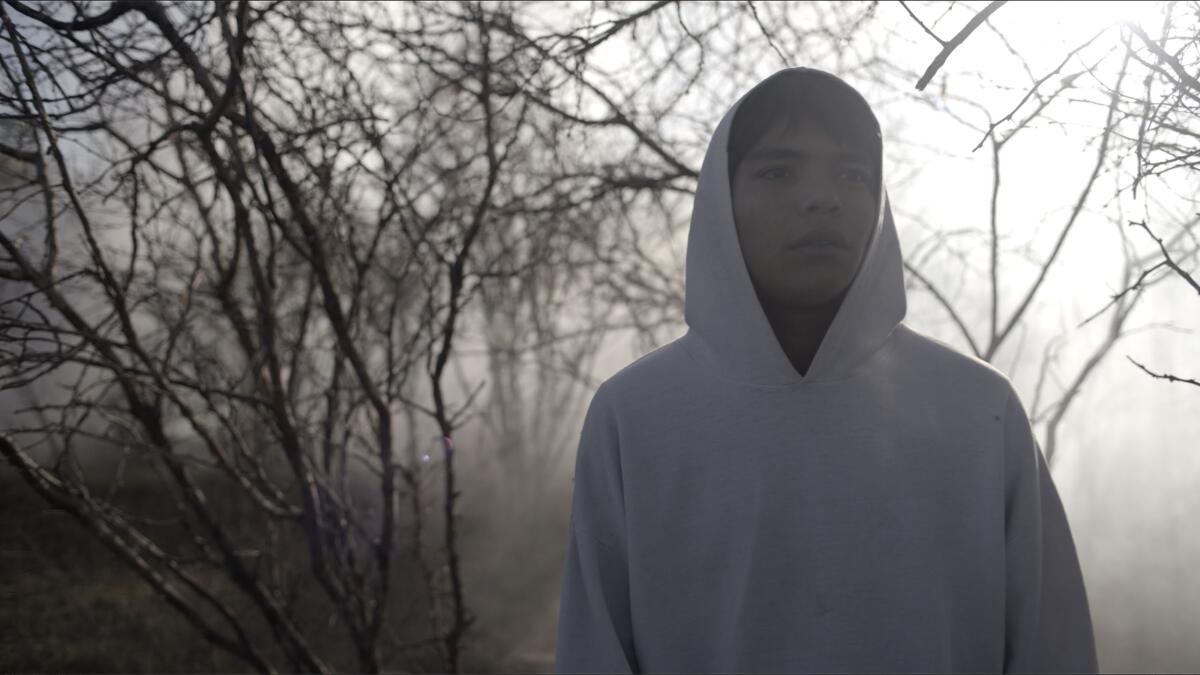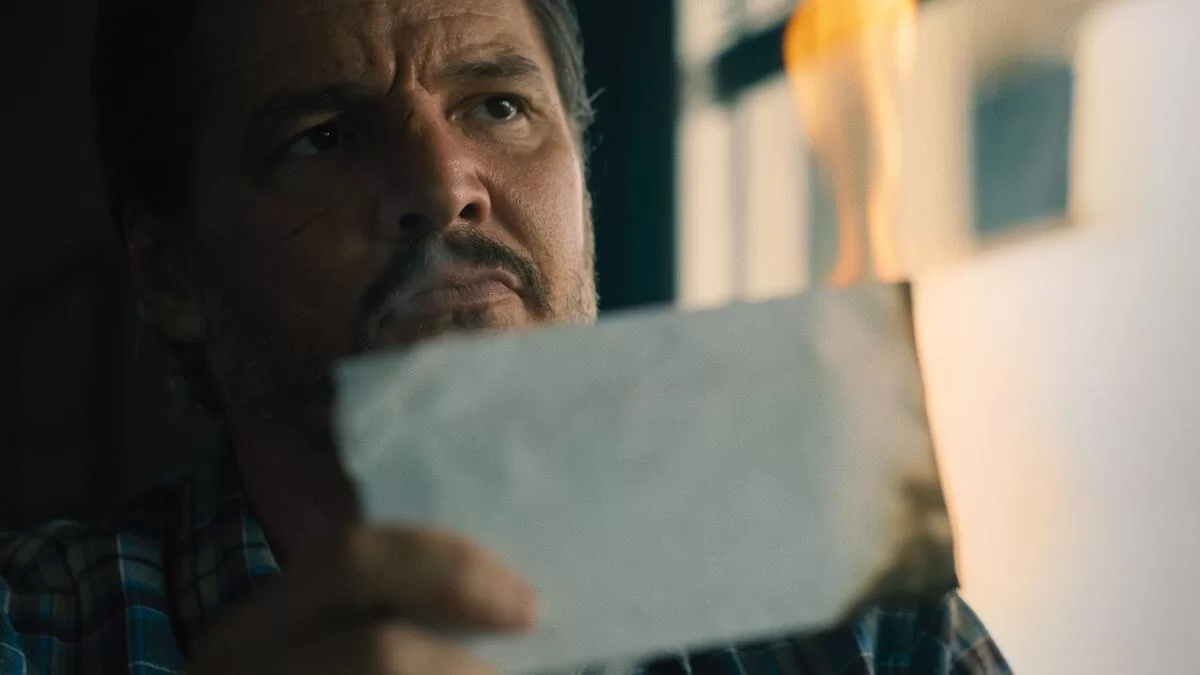For the entirety of this 85-minute movie, we are in a handsome Craftsman-style home where a married couple, Rebecca (Lucy Liu) and Chris (Chris Sullivan), have recently moved in with their teenage children, Tyler (Eddy Maday) and Chloe (Callina Liang). From the start, as nerves fray and tempers flare, it’s clear this family has its demons, which will soon be supernaturally compounded by eerie rumblings, self-operating doors and collapsing shelves. But if the genre trappings seem familiar, it’s the prowling, ghostlike vantage of the camera that makes all the difference: Soderbergh has elected to tell this haunted-house story entirely from the perspective of the haunter. Shooting in wide-angled long takes that range in tenor from voyeuristic languor to nerve-shredding anxiety, he transforms a domestic horror exercise into another Soderberghian tour de force.
For all its conceptual spareness, “Presence” has any number of built-in reference points, including Soderbergh’s own recent exercises in physical and narrative confinement, like “Unsane” and “Kimi” (which, like this movie, was written by David Koepp). Those two movies, incidentally, were both centered on a smart, rattled woman who maintains a tight grip on her wits and sanity even as they’re repeatedly called into question; the same is true of “Presence,” in which Chloe, still grieving the recent death of a close friend, senses the ghost far more acutely than her parents and brother do.

(Sundance Institute)
The sight of a fractious family under continual surveillance might also remind you of the “Paranormal Activity” movies, although what’s striking about the camerawork in “Presence” is how the camera seems to hover — and shiver — with more compassion than menace. You wonder almost immediately if this spectral visitor, for all the trouble it causes, might also be a benevolent one. That idea becomes even more pronounced if you know it’s the director himself behind the camera, operating under his usual pseudonym of Peter Andrews. There’s a sly in-joke buried in there somewhere: The key to Steven Soderbergh’s “Presence” is, well, Steven Soderbergh’s presence.
There is also, perhaps, a sly metaphor for the direct and indelible ways in which the best filmmakers can haunt us — and Soderbergh, now 61, has been one of those filmmakers for some time now. Arriving in Park City exactly 35 years after “sex, lies, and videotape” took Sundance by storm, “Presence” offers further evidence (as if it were needed) that Soderbergh has never shaken off his restlessly experimental edge. Deploying lightweight digital cameras and a seamless mix of visual effects and old-fashioned stunt work, he remains American independent cinema’s great problem solver, someone who approaches each movie as a logistical puzzle and sees aesthetic and financial limitations as creative enablers rather than deterrents.
But can Soderbergh solve the great problem of American cinema itself — namely, the sense that the audience for independent movies, limited and self-selecting to begin with, has dwindled to nothingness in the wake of flashier, more technologically au courant entertainment alternatives? If not, it wouldn’t be for lack of trying. Long before the pandemic swept in and shut down theaters (in some cases permanently), Soderbergh has been one of the industry’s most insightful thinkers and speakers on the challenge of making thoughtful, adventurous movies in a climate that has always been hostile to art. At the same time, Soderbergh has continued to make his own canny counterarguments, usually in the form of movies. And for all his well-earned cynicism about the industry, these movies — invariably smart, deft and disarmingly modest — have continued to express an unwavering optimism about the possibilities of the medium.
Some of those features have been unveiled on streaming platforms like Netflix (“High Flying Bird,” “The Laundromat”) and HBO Max (“Let Them All Talk,” “Kimi”), and it’s easy enough to see “Presence” following suit: This is a movie that will glide effortlessly into your living room and linger in the air afterward. But I hope a theatrical distributor buys the movie, an audience picture through and through that deserves, among other things, the horror-loving date-night crowds that reliably flock to the umpteenth “Saw” sequel. Will Soderbergh’s elegant camerawork and gore-free effects prove too subtle for those viewers? In some cases, sure. But an industry that doesn’t let them discover it for themselves in the first place truly has given up the ghost.

An image from the documentary “Girls State.”
(Apple/Sundance Institute)
Soderbergh’s presence here made for a nice 40th birthday present from the festival to itself, though he certainly wasn’t the only Park City veteran in attendance. The festival got off to an attention-grabbing start Thursday night with “Freaky Tales,” a funny, bloody valentine to the city of Oakland from the returning writing-directing duo of Ryan Fleck and Anna Boden, whose 2006 debut feature, “Half Nelson,” was a highlight of my very first Sundance Film Festival. Subsequent efforts, among them the superb “Sugar” (2008) and “Mississippi Grind” (2015), confirmed Fleck and Boden’s standing as two of the most promising independent voices in American movies. But that was before they abandoned those models of low-key realism for “Captain Marvel,” a franchise blockbuster that proved a dispiriting waste of their distinctive talents.
The unevenly entertaining “Freaky Tales” suggests a promising attempted return to indie basics, one with a healthy smattering of gonzo fantasy, a typically strong supporting turn from Pedro Pascal and some intricate storytelling gamesmanship replete with Tarantino-esque structural fillips. Set in 1987 Oakland, an as-yet-ungentrified hotbed of predatory cops and neo-Nazi scum, the movie rattles off a quartet of stories, each of which becomes a kind of revenge fantasy in which Black, Asian, Latino and queer protagonists rise up and sometimes join forces against bullies of every racist and homophobic stripe. Before long the movie is awash in a river of gore, green neon and Golden State Warriors references. It diverts for a while, only to dissipate almost immediately upon conclusion.
Another returning duo: Amanda McBaine and Jesse Moss, previously at Sundance with their excellent documentaries “The Overnighters” and “Boys State.” They’re back this year with a bristlingly insightful sequel to the latter: “Girls State,” which offers a microcosmic look at a one-week high-school program built to give young American women a firsthand taste of democratic self-governance. In tracking a handful of protagonists whose talents, aspirations and dreams will shape the outcome of this exercise, McBaine and Moss shrewdly apply the roving observational techniques of “Boys State” to remarkably different ends. Unsurprisingly, the abortion debate looms with great urgency over “Girls State,” which was shot not long before the Supreme Court overturned Roe vs. Wade. There’s also a fascinating dive into the inequalities that bedevil Boys State and Girls State themselves, reminding us how organizations often embody, at a structural level, some of the very problems they’re ostensibly trying to rectify.

Juan Jesús Varela in the movie “Sujo.”
(Ximena Amann/Sundance Institute)
“Boys State” began streaming on Apple TV+ in 2020; “Girls State” will arrive on the same platform, with similar election-season timing, on April 5. It will probably take longer for American audiences to discover the rewards of another duo-directed movie, “Sujo,” an early standout in Sundance’s international narrative competition. With any luck, though, this tender, harrowing and beautifully modulated coming-of-age drama will find its place in the art-house ecosystem and boost the profile of the Mexican filmmakers Fernanda Valadez and Astrid Rondero, reteaming after their much-acclaimed debut, “Identifying Features” (which Valadez directed and co-wrote with Rondero).
“Sujo” is named after a young boy who is raised in the shadow of cartel violence — an early scene finds his father, a sicario, locking the child in a car before heading off to dispose of some dirty business — but who is then set on a jagged path toward a better, safer life. (He’s played at different ages by Juan Jesús Varela and Kevin Aguilar.) Along the way, Sujo is nurtured by a number of wise women, including a pair of tough-loving aunties and a patient schoolteacher, who recognize his strength and potential but also know he must ultimately forge his own path. It’s that principled refusal of easy outcomes that makes “Sujo,” for all its tense, violent realism, so delicate and moving. Here, too, a compassionate spiritual presence seems to assert itself, in front of the camera as well as behind it.
